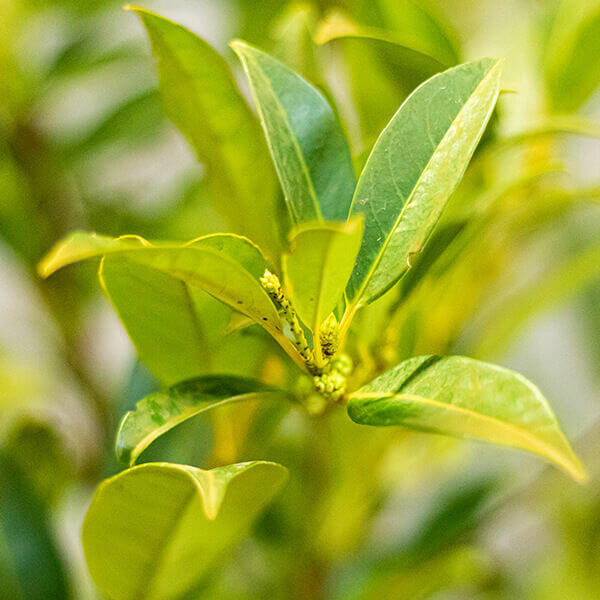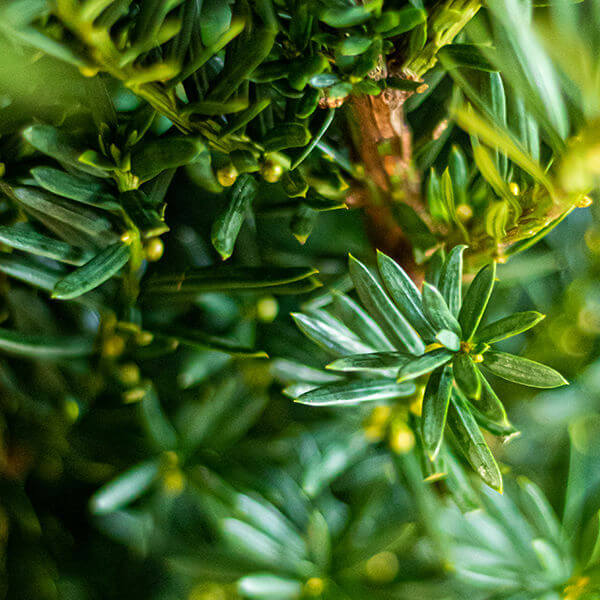Hedging Plants For Windbreaks
Boost your garden's attraction with rich hedge varieties such as Yew (Taxus), Thuja, Laurel, Photinia, and Bamboo, celebrated for their structural integrity and ecological advantages.
Yew and Thuja offer evergreen protection and winter season durability, while Laurel uses fast development and broad, fragrant leaves.
Photinia includes seasonal beauty with its vibrant red foliage, and Bamboo provides a low-maintenance, tranquil atmosphere.
These hedges improve air quality, minimize sound, and create tranquil, personal areas.
Proper planting, spacing, and maintenance ensure vigorous development and environmental consistency.
Explore how these lush varieties can raise your garden's beauty and well-being.
Secret Takeaways
Change Your Garden With Lush Hedge Ranges
- Select Yew for its thick, evergreen development and unequaled longevity.
- Opt for Laurel for its fast development and broad leaves, making sure quick personal privacy.
- Pick Photinia for its dynamic seasonal foliage, which turns a striking dark red.
- Use Bamboo for a low-maintenance, winter-hardy hedge with aesthetic appeal.
- Space plants 2-3 per meter and prune routinely for ideal development and health.
Popular Hedge Plants
When changing a garden with lush hedge ranges, it's necessary to consider popular hedge plants such as Yew, Thuja, Laurel, and Photinia due to their special qualities and benefits.
Yew (Taxus) is extremely respected for its longevity and dense, green growth, making it a prime choice for withstanding landscapes.
Thuja is noted for its evergreen foliage and robust winter season strength.
Photinia includes seasonal vibrancy with red leaves that darken with time, creating dynamic visual appeal.
Laurel offers rapid growth and aromatic, broad leaves, suitable for quick privacy.
Additionally, Bamboo is an outstanding choice for atmosphere, using a low-maintenance, winter-hardy alternative that improves the garden's aesthetic with its stylish, swaying walking sticks.
These selections deal with a range of horticultural needs and preferences.
Advantages of Garden Hedges
Garden hedges use a wide range of advantages, making them an important addition to any landscape. These natural barriers are cost-efficient to implement and provide substantial wind security, improving air circulation and adding to noise reduction. The thick foliage of hedges like Thuja and Beech guarantees privacy by blocking presence, producing a peaceful and secluded environment.
Hedges likewise play an essential role in microclimate guideline, offering a stable environment that promotes plant growth and lessens temperature variations. Their elaborate leaf structures filter pollutants, improving air quality and contributing to a much healthier garden community.
Additionally, hedges master sound reduction, soaking up and deflecting sound waves to lower ambient sound levels. This double functionality of supplying both acoustic and visual privacy improves the overall serenity and visual appeal of any garden.
Planting and Maintenance Tips
For a successful hedge, careful preparation of the planting area is important. Ensure the soil has proper pH and drainage to support strong root advancement.
Area the plants appropriately for the selected types. Water the hedge frequently throughout its initial development stage, adjusting as required with seasonal changes.
Implement a methodical bug control and disease prevention method, utilizing chemical or natural treatments when necessary. Routinely examine for aphids, termites, and fungal infections.
Apply mulch to maintain wetness and suppress weeds. Seasonal pruning promotes dense growth and air flow, necessary for plant health.
Following these standards will assist you cultivate a dynamic, well-maintained hedge that improves the appeal of your garden.
Spacing and Cutting Guidelines
Spacing and Trimming Guidelines
Proper spacing and trimming are essential for cultivating healthy, visually appealing hedges. Adequate spacing ensures each plant receives sufficient nutrients, light, and airflow.
Follow these guidelines for optimal hedge upkeep:
- Spacing: Position hedge plants 2-3 plants per meter to motivate robust growth.
- Pruning Techniques: Regular pruning is important for maintaining preferred hedge height and shape. Trim new growth in summertime and cut back older wood throughout winter season.
- Seasonal Care: Adjust cutting schedules and approaches according to seasonal requirements to guarantee plant health.
- Hedge Height: Frequently screen and cut to keep the wanted hedge height and accomplish uniform aesthetics.
Following these actions will guarantee your hedge flourishes, boosting both the appeal and functionality of your garden.
Selecting the Right Hedge
Choosing the Right Hedge
Picking the proper hedge involves assessing aspects such as mature height, foliage density, and ecological resilience. Effective hedge plant choice requires comprehending each species' development qualities and site-specific versatility.
For instance, Yew (Taxus) provides exceptional longevity and thick development, while Thuja is notable for its winter season strength. Additionally, thinking about upkeep requirements is essential; fast-growing types like Laurel or Privet demand regular trimming, whereas low-maintenance choices like Bamboo or Ivy may be more effective for those seeking minimal upkeep.
Environmental aspects such as soil type, light schedule, and wetness conditions need to also guide the choice process. This careful technique ensures the chosen hedges will flourish, offering both functional and visual benefits to the garden landscape.
Delivery and Planting Advice
To guarantee your hedge plants thrive, they need to be delivered by specialized carriers and planted quickly upon arrival.
Follow these important steps for successful planting:
- Soil Preparation: Enrich the soil with raw material to enhance drain and nutrient content.
- Planting Depth: Produce a trench two times the width and equivalent to the depth of the root ball.
- Watering Methods: Water thoroughly after planting, keeping the soil consistently wet however not saturated.
- Mulching: Apply a layer of mulch to maintain wetness and suppress weeds.
Client Assistance and Service
Provided the essential function of timely support in horticultural pursuits, our customer support group is available 6 days a week through telephone, email, and social media to offer professional recommendations and swiftly resolve any concerns. Their dedication to fast action times guarantees consumer satisfaction by fixing questions associated with plant health, optimal planting methods, and upkeep schedules.

-------------------
Within 24 hours
Within 2 days
Within 24 hours
This thorough assistance system, strengthened by a stellar 9.3/ 10 customer ranking, highlights our commitment to boosting the gardening experience for every single customer.
Frequently Asked Concerns
The Length Of Time Does It Take for Hedge Plants to Develop?
Hedge plants normally require one to 3 years to become completely developed, with the exact period varying by types and growing conditions.
Effective care during this important period is necessary for robust growth. Consistent watering, watchful weed control, more info and suitable fertilizer application are essential in promoting strong root development.
For instance, fast-growing species like Laurel might establish faster, while slower-growing varieties such as Yew may take longer. Thorough maintenance speeds up the establishment process, leading to healthy and thick hedges.
What Are the very best Hedge Plants for Personal Privacy?
The concern of the best hedge plants for personal privacy includes evaluating evergreen and deciduous choices.
Evergreen hedges like Thuja, Laurel, and Cypress offer year-round protection, guaranteeing constant personal privacy.
In contrast, deciduous hedges such as Beech provide seasonal personal privacy, shedding leaves in cooler months.
Secret maintenance suggestions for privacy hedges include routine cutting, fertilizing in spring, and correct spacing-- normally 2 to 3 plants per meter.
Additionally, consistent watering and thorough weed removal are crucial for promoting healthy, dense growth.
Can Hedge Plants Attract Wildlife to My Garden?
Yes, hedge plants can draw in wildlife to your garden by offering necessary advantages like shelter, food, and nesting websites, therefore boosting regional biodiversity. For circumstances, yew, holly, and laurel are exceptional for drawing in birds, while ivy supports a range of bugs.
Nevertheless, it is very important to keep in mind that there are some downsides, such as increased maintenance to manage bugs and routine upkeep. Thoroughly picking and preserving hedge ranges can assist balance these disadvantages and benefits, eventually cultivating a dynamic and sustainable environment in your garden.
Exist Any Flowering Hedge Plants Available?
Yes, there are flowering hedge plants readily available that can improve the beauty of your garden.
For instance, Elaeagnus, also called Olive Willow, produces aromatic white flowers in the fall, adding a touch of sophistication.
Photinia, another popular choice, showcases lively red leaves that mature into an abundant green, producing a vibrant visual impact throughout the seasons.
To make sure these plants flourish, it's vital to practice appropriate pruning strategies and seasonal maintenance, such as cutting new development in the summertime and cutting down in the winter.
These measures will help preserve the health and aesthetic appeal of your blooming hedges.
How Do I Prevent Insects in My Hedge Plants?
To avoid pests in hedge plants, use natural bug control techniques and keep proper hedge care. Present beneficial bugs like ladybugs, which victimize harmful insects, to produce a well balanced ecosystem.
Routinely examine your hedges for indications of invasion and promptly remove any affected parts to avoid the spread. Make sure the health of your hedges by using balanced fertilizers and providing sufficient water.
Use mulching to keep soil wetness and correct spacing to lower plant tension and promote robust growth. These practices jointly assist in minimizing pest problems and preserving a healthy hedge.
Conclusion
In essence, selecting the best hedge ranges such as Yew, Thuja, and Laurel can transform any garden into a peaceful haven. These plants provide year-round greenery, enhance visual appeal, and deal useful advantages like sound decrease and wind security.
Appropriate planting methods, precise spacing, consistent watering, and seasonal trimming are vital for optimal development.
Dependable delivery services and expert consumer support make sure a seamless experience from purchase to planting, making it simpler than ever to raise your outside area.
Garden hedges provide a wide variety of benefits, making them a valuable addition to any landscape. These natural barriers are cost-efficient to execute and provide significant wind security, improving air circulation and contributing to sound decrease. The dense foliage of hedges like Thuja and Beech makes sure privacy by blocking exposure, developing a tranquil and secluded environment.

Pruning Methods: Routine pruning is important for maintaining wanted hedge height and shape. Cut new growth in summer season and cut back older wood during winter.